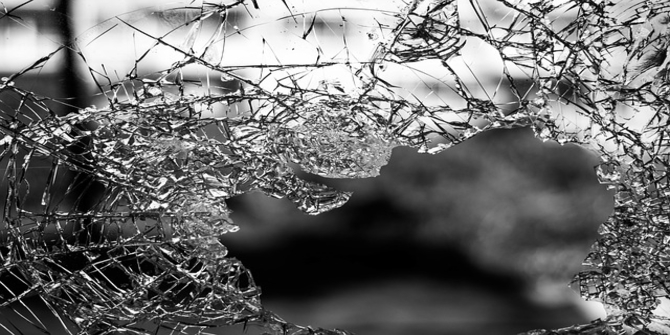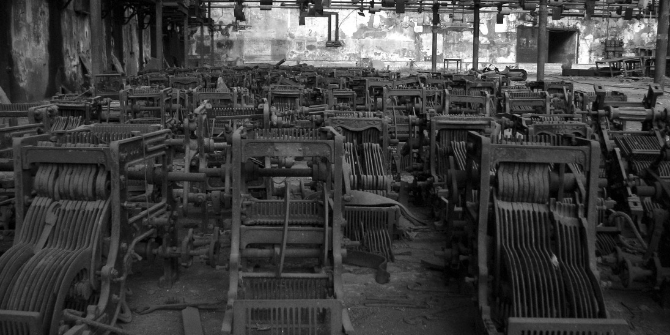In Jim Sykes’ new book The Musical Gift: Sonic Generosity in Post-War Sri Lanka, the act of a musical performance is cast as a tool for building peace and tolerance in a country recently in a state of civil war. Examining the musical traditions of the Tamil minority and Sinhala Buddhist majority, Anishka Gheewala Lohiya (LSE) finds a work of scholarship full of hope for how music can help reconcile post-conflict Sri Lanka, bringing peace to the country one song at a time.
The Musical Gift: Sonic Generosity in Post-War Sri Lanka. Jim Sykes. OUP. 2018
Natural disasters, war and inter-community fighting are often written about as opposites to peace, reconciliation and tolerance. But what happens to music in times of trouble? Jim Sykes (University of Pennsylvania) argues that the ‘musical gift’ in Sri Lanka is more about protecting and healing, a possible means of leading to peace and reconciliation in a deeply divided country, rather than a definition of identity and difference.
Sykes engages with the assumption that the Tamil minority and Sinhala Buddhist ethnic majority have two separate musical traditions and histories, arguing that music is a connection between communities through the act of musical giving, as opposed to the production of difference. Going beyond nostalgia for a pre-war musical ‘utopia’ (40), or social tensions post-civil war, his book shows the reader the routes that music can take to bring a hopeful, reconciled and ‘happy’ community through recognising acts of musical giving between and within communities in Sri Lanka.
Moving away from discourses that relate identity and music, Sykes offers a sensitive portrayal of how music traditions are often shared, borrowed and enjoyed together. He uses the metaphor of commercial goods such as aspirin and coffee (15) to highlight how the “musical gift” can be traced but, crucially, is not the expression of the ‘soul of the community or individual’ it comes from. Rather, it is an act that relates to ‘technology of care’ and self-care (Ibid). In his first chapter, we are introduced to the low-country Berava (drummer) caste of Sinhala ritual specialists who see drumming as a mode of speech rather than entertainment to be used in rituals to Buddha and deities, but also for healing.
For non-specialists in drumming, like myself, it can be only too easy to lose yourself in the specificities of rhythm or instruments, however, Sykes offers YouTube links to facilitate his description. A fascinating aspect of this Chapter is the idea of loud drumming being inherently associated with the concept of a quiet, ‘zen-like’ Buddhism, while at the same time, being offered to certain Hindu gods during certain rituals. By situating this type of drumming in various histories and politics, including colonialism, and Sri Lanka’s relationship with South India, he forces us to question conventions, not only on Berava drumming but for ethno-nationalisms more broadly.
Berava drumming is a ritual secret, where Sinhala drum teachers (gurunnanses) guard their knowledge and pass it down through their own lineage. Often rival lineages end, or are rumoured to end, in serious conflict. Music, here, becomes an object that can be given if one wishes to do so, because of the Buddhist principle of the ‘not-self’ (90) where there is no permanent soul, essence or self. Sykes persuasively argues that drumming then becomes a gift object. This type of music, he argues cannot become an expression of inward identity, as it serves not the drummer or the audience, but in the offering of the drum speech itself.
Sykes moves to an overview of the regional differences in Sri Lankan Tamil musical giving, discussing it alongside dance and theatre, particularly with kooththus (dance dramas) in order to move to how these are connected and lead to the political set up of his argument commenting on the social relations with the state and communities, and within communities. By exploring other communities such as religious groups, and even neighbourhoods, he shows that the ‘cartography of culture zones’ (127) while ethnicised, makes up Sri Lanka’s cultural history, and also contributes to communal conflict. He looks at the idea of ‘belonging’, through a geographic and discursive erasure of Tamil arts spaces, being aligned with foreignness or ‘Othering’.
A wonderful example of this is his section on “The Failure of the Musical Gift”. Sykes discusses how an NGO initially offers the musical gift through teaching Sinhala music to both Sinhalese and Tamil schoolchildren. On closer inspection, he realises that the children were not learning together, rather a Sinhala teacher would teach them separately, emphasising that this was a gift, from the Sinhalese to the Tamils who were the ones ‘affected’ by the war. In this sense, the musical gift becomes unequal, relating to the identity of the victors who are being ‘generous’ by offering their musical gift to the losers. There is an inherent hierarchy in the way this was being offered in this case, alienating the musical gift.
Sykes’ story is one of decolonisation through a study of the musical gift, a shift from a focus on identity politics. He ends with messages of hope, looking at reconciliation and tolerance through four points: that there is a protective power of musical giving; that cultural giving between communities and people form Sri Lanka’s cultural history; that communities throughout Sri Lanka are entangled, not in cultural zones; and that there should not be a subordination of one group’s regions, practices or presence for another. The Musical Gift draws to a close with a discussion of happiness in Sri Lanka, which became a political debate. Stemming from a popular song by Pharell Williams called ‘Happy’, people around the world made videos dancing to the song in public. However, in Sri Lanka, this was met with cynicism as not only does it tailor a certain image of Sri Lanka, ignoring the experience of disasters, and political tensions in certain regions of Sri Lanka, but, crucially, it highlights a state security mentality as people were stopped from filming and dancing in public. Musical giving, therefore, undermines this state mentality, and cultural zoning, by offering a related cultural history of the peoples of Sri Lanka, that can be non-hierarchical and lead to peace and reconciliation.
For those of us who are not experts in ethnomusicology, this book provides a rich view into a world of music, politics and peace in Sri Lanka, while emphasising the importance of tracing not simply music and its identity, but its historic and current communal connections across borders of difference.
This article gives the views of the author, and not the position of the South Asia @ LSE blog, nor of the London School of Economics. Please read our comments policy before posting. Featured photo: Musical Note Sheet; Credit: Unsplash, Marius Masalar.







